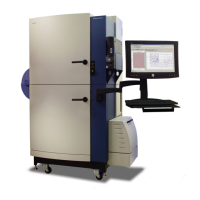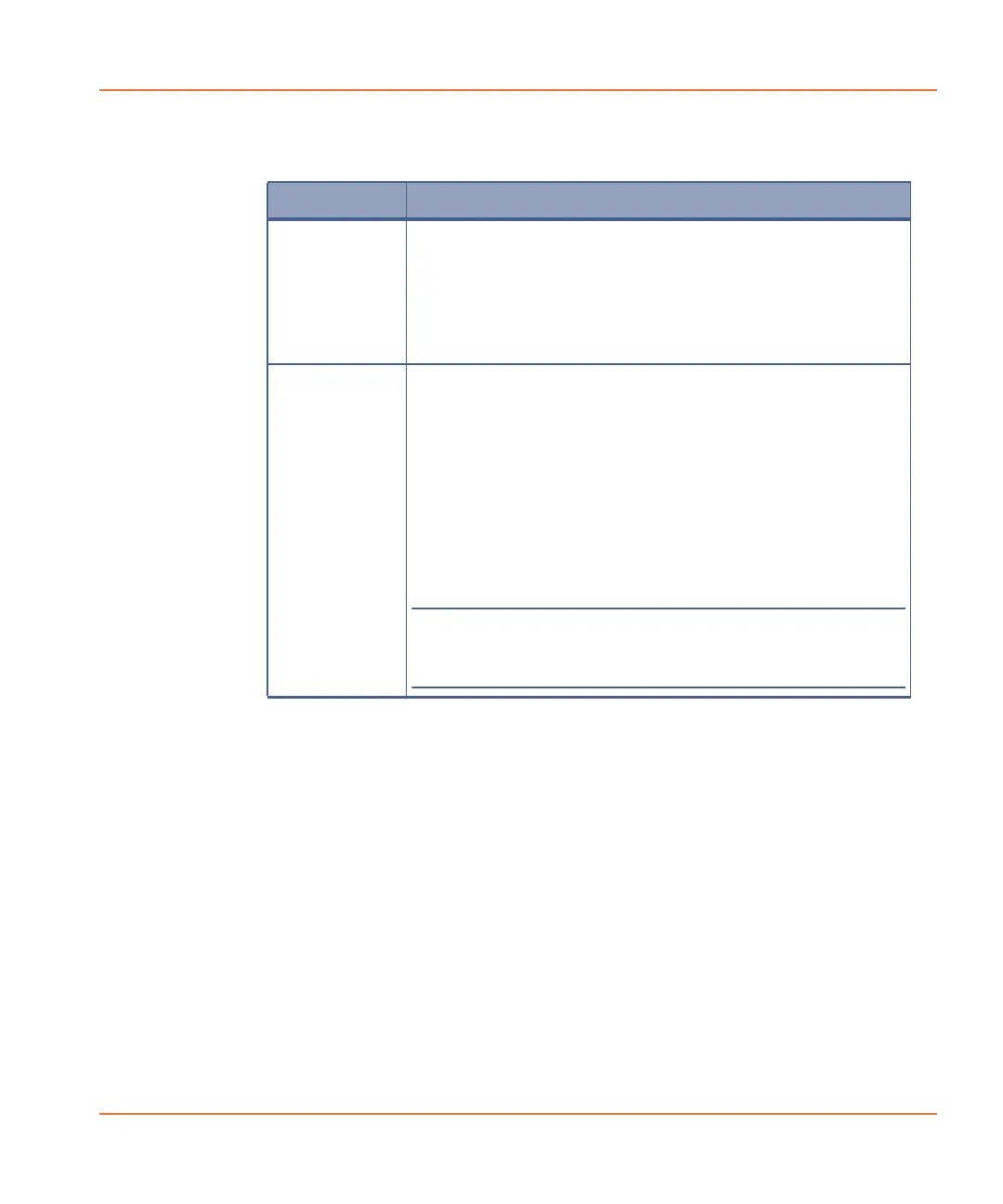FLIPR
®
Tetra High Throughput Cellular Screening System User Guide
0112-0109 H 123
The table below describes the additional options in the Read with TF
dialog box:
Wash Tips or Pins Process
This process is normally used to eliminate unwanted agonist or
antagonists prior to another addition within an experiment or between
experiments. In many cases, it reduces consumable costs and down-
time associated with replacing tips.
For standard pipettors, tips are inserted into the wash location and
wash fluid aspirated and dispensed. This can be done a number of
times (strokes) in the same wash fluid, then the whole process
repeated up to five times (wash cycle) with fresh wash fluid.
For the pin tool, up and down motion is used to force fluid in and out of
the capillary slot of the pins. A typical wash protocol uses an initial
solvent to remove compound from the pins, followed by a second
solvent to remove the first solvent. It is recommended that pins are
blotted at a blotting station to remove excess liquid from the pins
between washes.
Item Description
Number of
Reads Before
Dispense
Enter the number of reads to be taken before fluid is
added to the plate. This provides a cellular response
baseline prior to addition of agonist or antagonist. Number
of Reads Before Dispense is included in the total
number of first interval reads entered in the Number of
Reads field, for example, if the Number of Reads is 60
and the Number of Reads Before Dispense is five, there
will be 55 reads after dispense is initiated.
Save Images When checked, up to 100 images are saved in an image
file (*.png) associated with an experiment. These images
can be used for more than one dispense as long as the
total images saved do not exceed 100 for the experiment.
Number of Images Before Dispense—Enter the total
number of images to be saved prior to initiating the
dispense.
Number of Images After Dispense—Enter the total
number of images to be saved after initiating the dispense.
By default one image prior to and nineteen after dispense
are saved for review in Image Display (see page 107).
Note: Images may be useful to troubleshoot
problems with your cell plate such as cells detaching
during fluid dispense.

